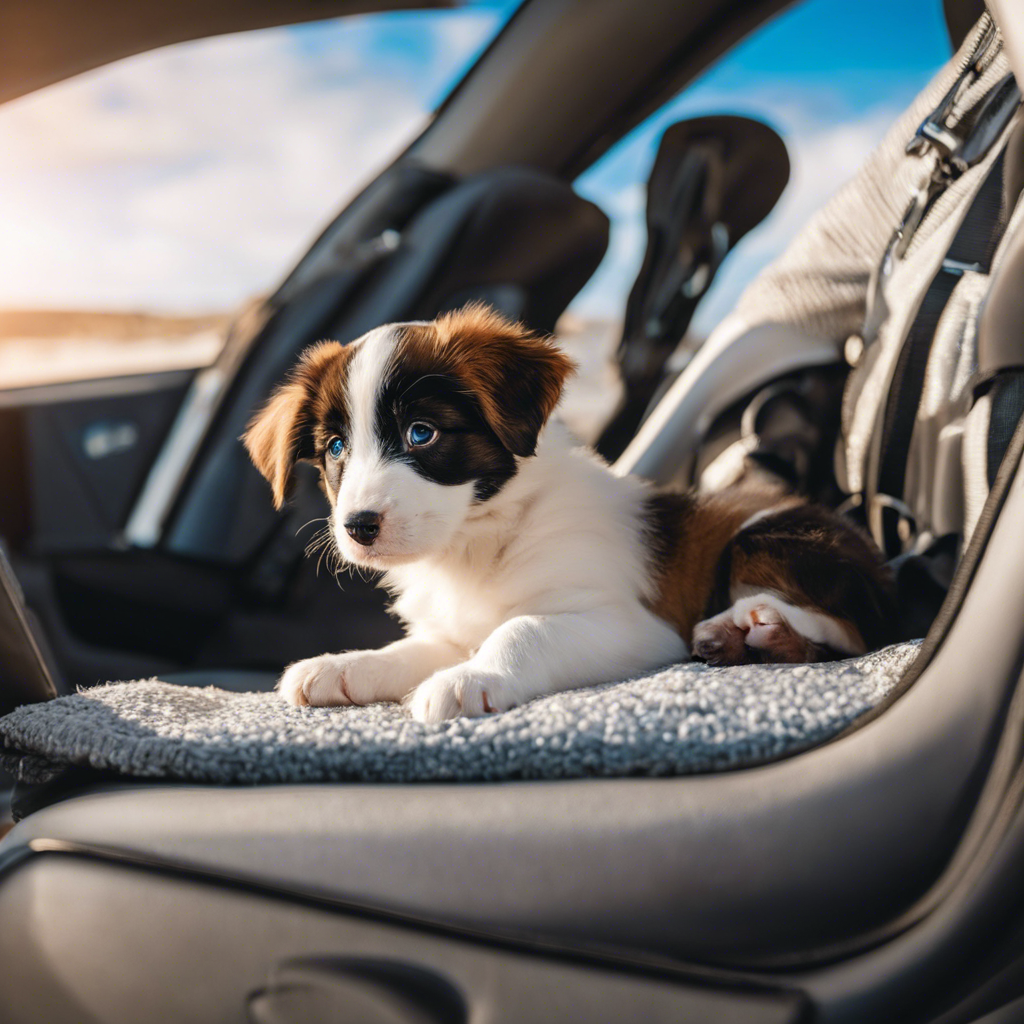# Car Travel with Puppies: A Safe and Happy Journey for Your Furry Friend
For many dog owners, traveling with their furry companions is an enjoyable experience that creates precious memories. Whether you’re going on a road trip or simply running errands, bringing your puppy along for the ride can be fun and exciting. However, car travel can also be potentially dangerous if proper precautions aren’t taken to ensure your puppy’s safety and comfort. Puppies, with their boundless energy and curiosity, require specific safety measures and training to make car rides a positive and safe experience. Here are some essential tips and training techniques to prepare your puppy for safe car travel.
## Preparation and Safety Gear
Before hitting the road, ensure your puppy has all the necessary safety gear. A well-fitted puppy car harness is crucial for their security. These harnesses are designed to secure your puppy in place and prevent them from becoming a projectile in case of sudden stops or accidents. You can find various sizes and styles to fit your puppy comfortably. Attaching the harness to the seatbelt or a specialized safety tether can further enhance their protection. Additionally, consider using a puppy car seat or booster seat, which provides an elevated view and a sense of security for your furry friend. These seats often have built-in harnesses for added safety. For smaller puppies, a travel crate or carrier is an excellent option. It keeps them contained and safe, and many are designed to attach to seatbelts for added stability.
Another essential item is a puppy-friendly travel kit, which should include a few of their favorite toys, treats, water, a portable water bowl, and any necessary medication or health records. A blanket or familiar item with their scent can also help reduce anxiety during the journey. Don’t forget poop bags and cleaning supplies in case of accidents, as even potty-trained puppies might have unexpected moments in the car due to motion sickness or excitement.
## Crate Training and Car Introduction
Crate training is a valuable skill for car travel. Ensure your puppy is comfortable in a crate or carrier by introducing it early on. Begin by making the crate a positive and cozy space, filled with soft bedding and some of their favorite treats and toys. Allow your puppy to explore and spend time in the crate at home, gradually increasing the duration. This training helps them view the crate as a safe haven. When placing the crate in the car, ensure it is securely fastened and positioned in a safe area, preferably in the back seat or cargo area, where the puppy can still see out the windows. A front seat placement is not recommended due to the potential danger of airbags and limited space for the crate.
If your puppy shows signs of anxiety or fear in the car, take incremental steps to desensitize them. Start by sitting in the parked car with the puppy, providing treats and praise. Gradually progress to short engine-on sessions, and finally, short drives around the neighborhood. Always be patient and provide positive reinforcement, making the car a rewarding experience.
## Motion Sickness and Comfort
Motion sickness is common in puppies, but there are ways to help manage it. Before traveling, limit food intake to avoid an upset stomach, and consult your veterinarian for advice on any necessary medication. During the trip, take frequent breaks to allow your puppy to stretch their legs, drink water, and relieve themselves. Keep the car well-ventilated and at a comfortable temperature. You can also use motion-sickness aids designed for dogs, but always consult your vet first.
Creating a comfortable environment is essential. Play calming music or use puppy-safe essential oils to help soothe your furry friend. Using a window shade or covering can prevent direct sunlight and reduce heat, making the journey more pleasant. Additionally, consider placing a soft blanket or puppy pad on the seat to make it cozier.
## Road Trip Essentials and Training
For longer road trips, plan regular stops for exercise and bathroom breaks. Puppies have shorter attention spans and higher energy levels, so these breaks are vital to their well-being. Find dog-friendly rest stops or parks along your route where your puppy can stretch their legs and have some playtime. Always keep them on a leash in unfamiliar areas and ensure they are up-to-date on vaccinations.
If you’re traveling with multiple pets, ensure they are crate-trained and comfortable together. Start by introducing them to the car environment together, gradually increasing the duration of their shared rides. This process helps prevent territorial issues and ensures they can travel harmoniously.
## Driving Safety and Distractions
As a responsible driver, your primary focus should be on the road. Avoid distractions by keeping your puppy secure and comfortable. Never allow them to roam freely in the car, as this can lead to dangerous situations. If you need to attend to your puppy while driving, pull over to a safe area first. It is also important to remember not to feed or give treats while driving to prevent choking hazards.
## Conclusion
Traveling with your puppy can be a wonderful experience with proper preparation and training. By following these safety tips and investing time in training, you can ensure that your puppy becomes a happy and safe travel companion. Car rides can be an exciting adventure for both of you, creating lasting memories and strengthening the bond between you and your furry friend.
Remember, every puppy is unique, so tailor your approach to their needs and preferences. With patience, consistency, and the right precautions, car travel can become a positive and enjoyable part of your puppy’s life, opening up a world of adventures together.

